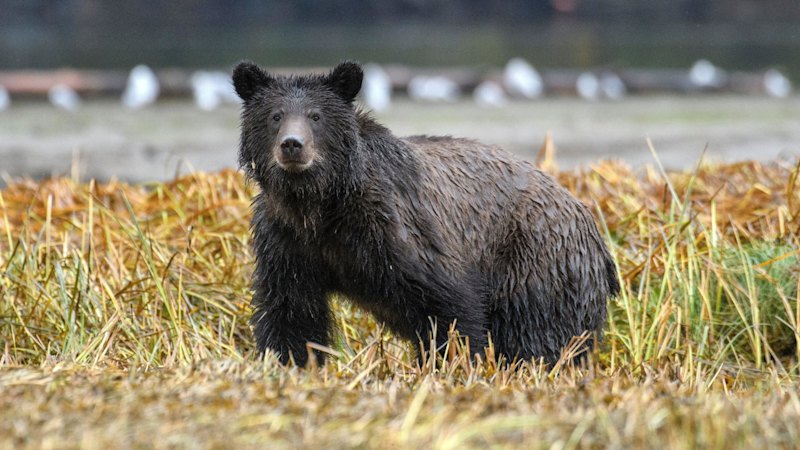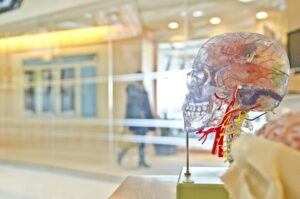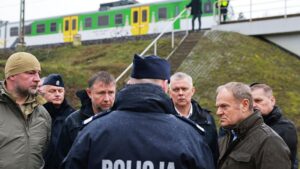
Toronto: A grizzly bear attacked a group of primary school students on a walking trail in Canada, seriously injuring three children and a teacher. The incident occurred in the town of Bella Coola, located approximately 700 kilometers northwest of Vancouver, along the central coast of British Columbia.
Authorities are actively searching for the bear, and residents have been advised to stay indoors until further notice. The attack unfolded when a group of about 20 students and teachers paused along a trail near a river, and the bear suddenly emerged from the forest, according to the B.C. Conservation Officer Service (BCCOS).
Several teachers bravely intervened, using bear spray and a bear banger—a loud, explosive device designed to deter wildlife—to drive the bear away. Parent Veronica Schooner recounted that her 10-year-old son, Alvarez, was among the children from the years 4-5 class who were attacked. “He was so close to the animal he even felt its fur,” she said. “He was running for his life.”
Heroic Efforts and Immediate Response
Schooner described how many people attempted to halt the attack, but one male teacher bore the brunt of it and was among those airlifted from the scene. Some children were inadvertently hit with bear spray during the teachers’ efforts to fend off the bear.
B.C. Premier David Eby praised the teachers’ heroism at a press conference, stating, “I want to send my heart out to the parents and kids and loved ones and everyone who has been injured and is in hospital right now, and I hope for their quick recovery.”
Alvarez, though traumatized, was primarily concerned for his classmates. “He keeps crying for his friends, and oh my goodness, right away he started praying for his friends,” Schooner added.
Medical Response and Community Support
The Provincial Health Services Authority reported that paramedics provided emergency medical treatment to four patients, who were then transported to the hospital. Two patients remain in critical condition, while two others are in serious condition. Seven additional individuals received care at the scene but did not require hospitalization.
Corporal Madonna Saunderson of the Royal Canadian Mounted Police described the victims’ injuries as “very serious at the very least.”
The group was from the Acwsalcta School, operated by the Indigenous Nuxalk Nation, which closed on Friday following the attack. The school expressed gratitude for its team and students in a Facebook post and made counseling services available to those affected.
Historical Context and Wildlife Management
Grizzly bear encounters in British Columbia are not uncommon, given the province’s vast wilderness areas. However, attacks on humans, particularly involving children, are rare and often result in increased scrutiny of wildlife management practices.
According to wildlife experts, bear attacks can be unpredictable, but they are often triggered by bears feeling threatened or surprised. The B.C. Conservation Officer Service continues to monitor bear activity in the region, emphasizing the importance of education and preparedness in preventing similar incidents.
“It’s hard to know what to say during this very difficult time. We are so grateful for our team and our students,” the school stated, reflecting the community’s resilience in the face of adversity.
Looking Ahead: Safety and Recovery
The Nuxalk Nation chief and council acknowledged the profound impact of the attack on the community, particularly on the children and their families. As the search for the bear continues, authorities are focused on ensuring the safety of residents and providing support to those affected.
In the aftermath of such incidents, discussions often arise about the balance between human activity and wildlife conservation. As communities like Bella Coola navigate these challenges, the emphasis remains on fostering coexistence while prioritizing safety and education.
The coming days will likely see increased efforts to locate the bear and assess the circumstances leading to the attack, while the community rallies to support the victims and their families during their recovery.







